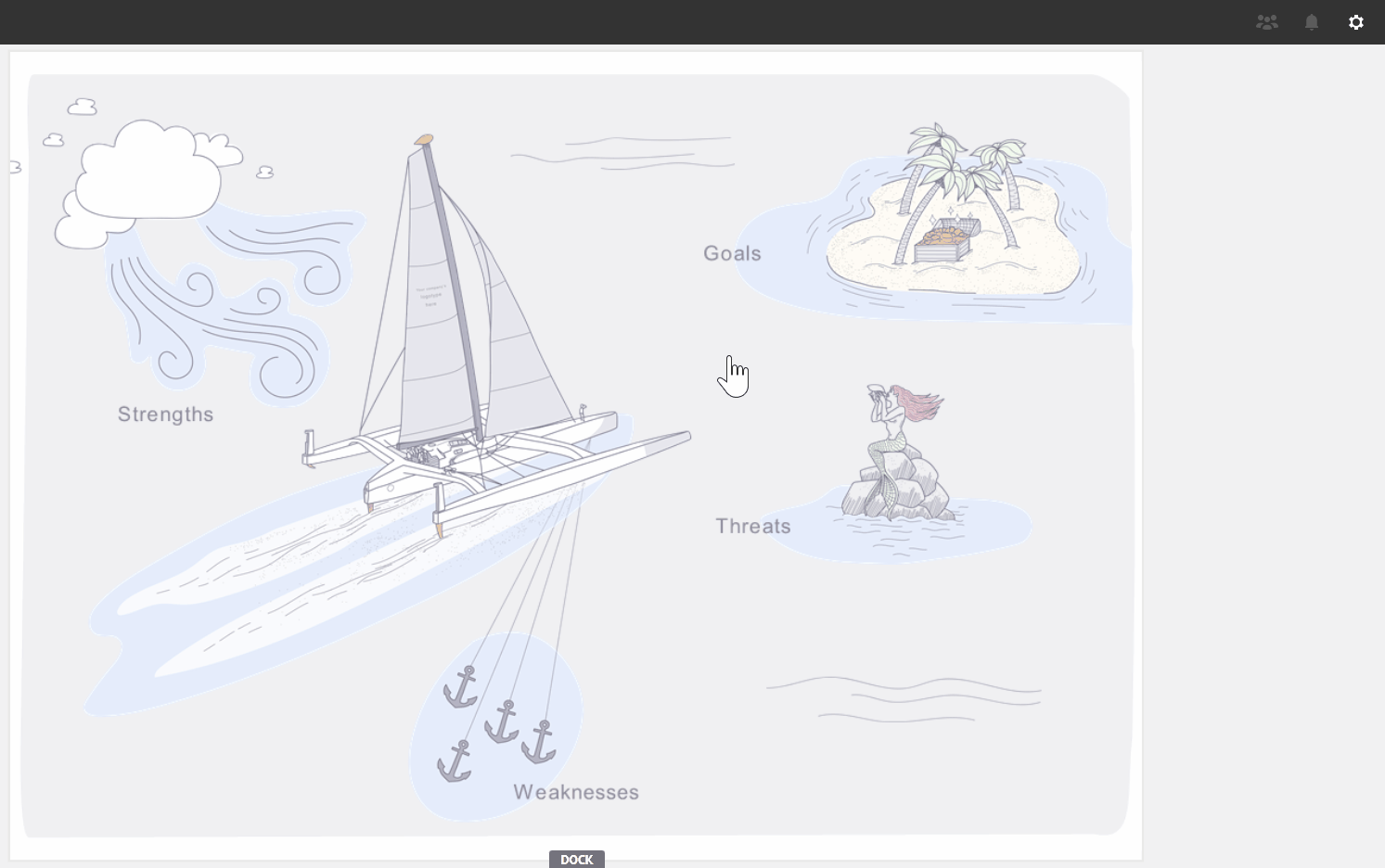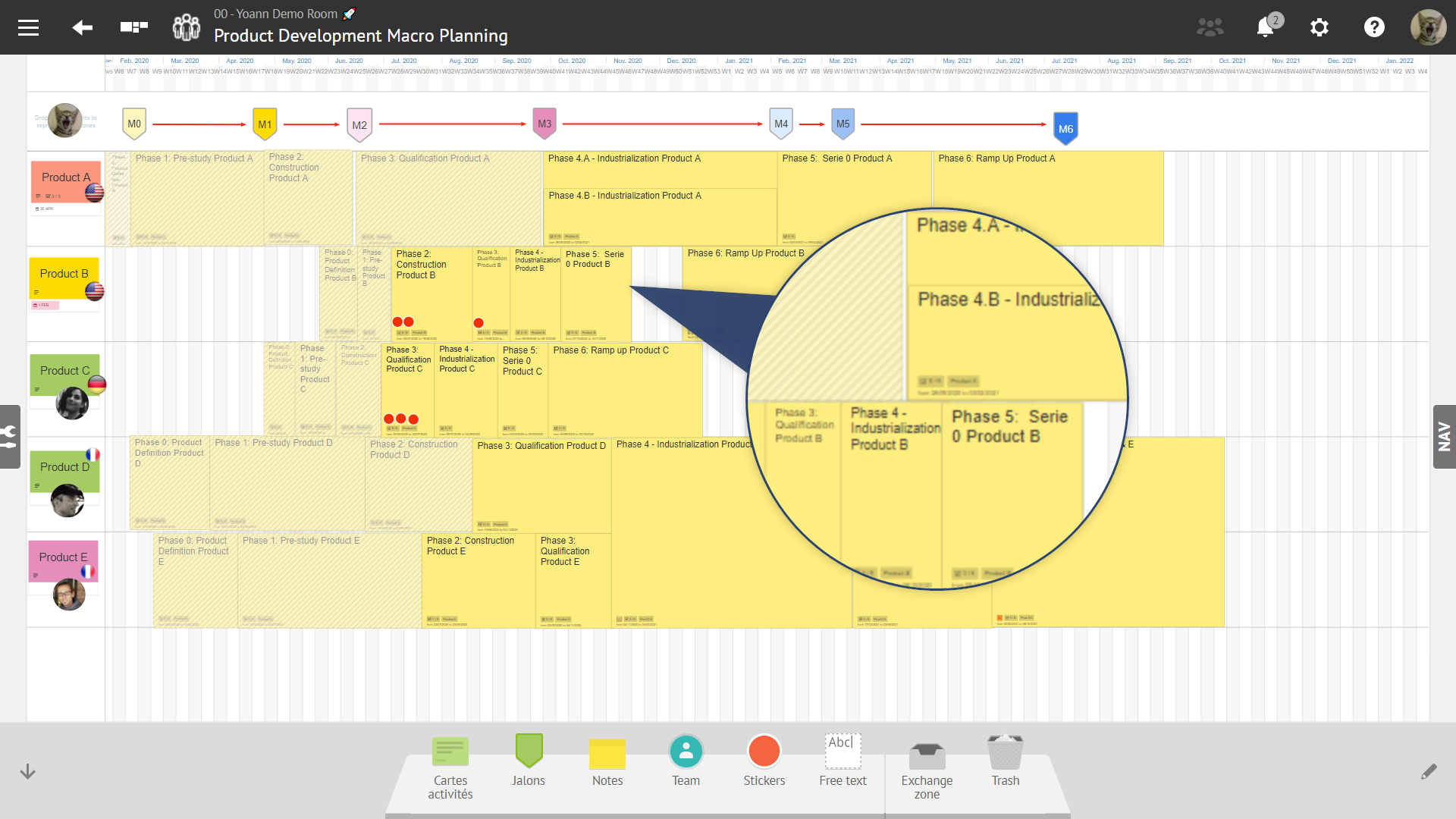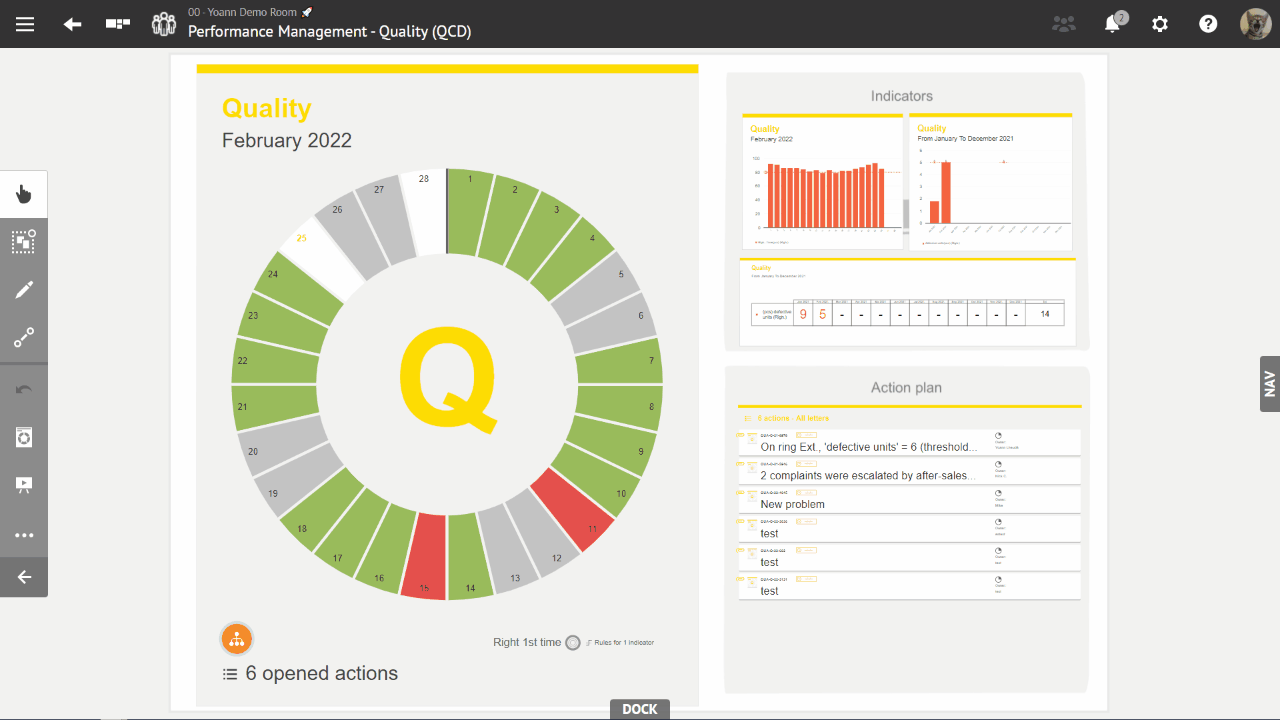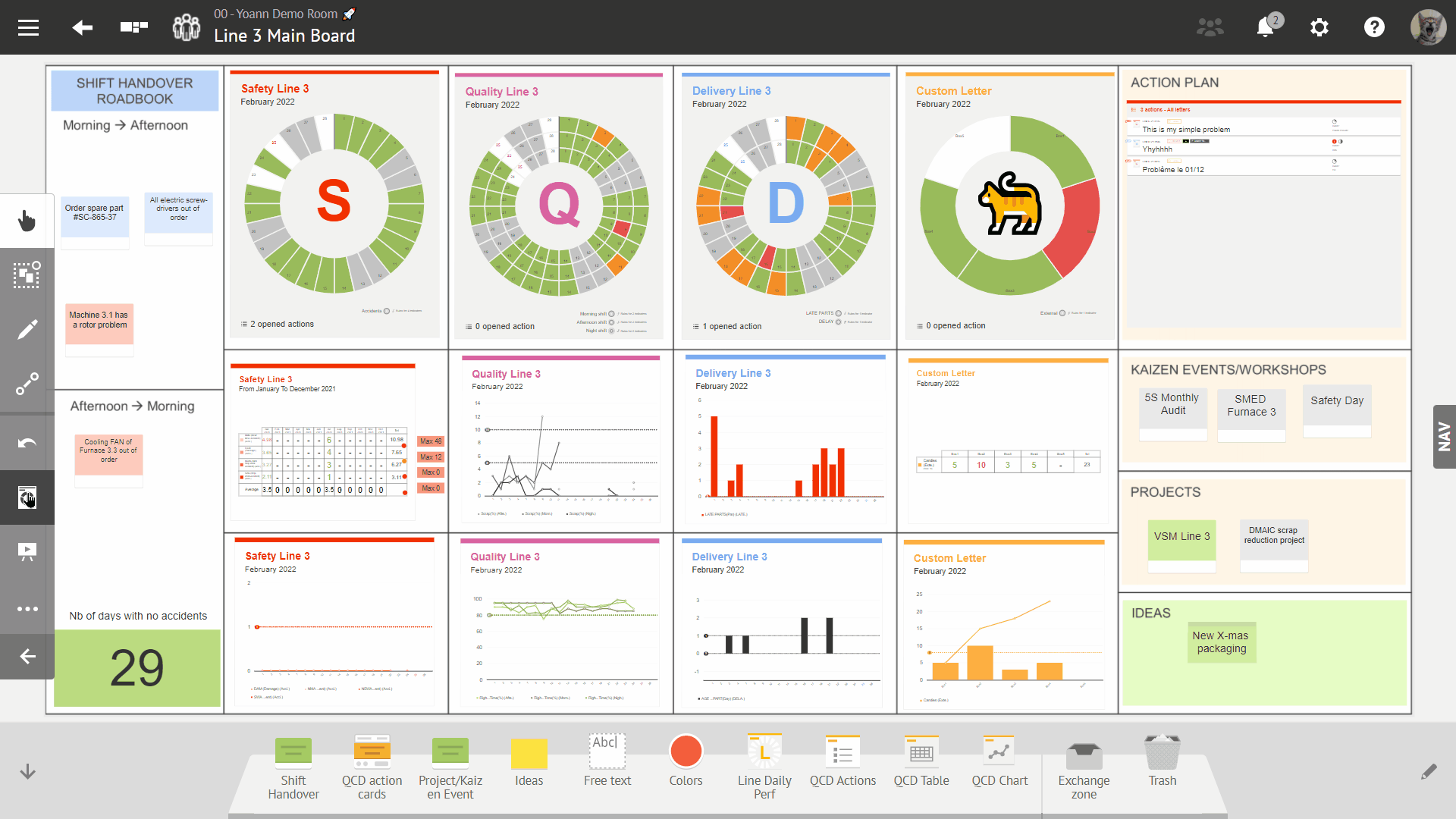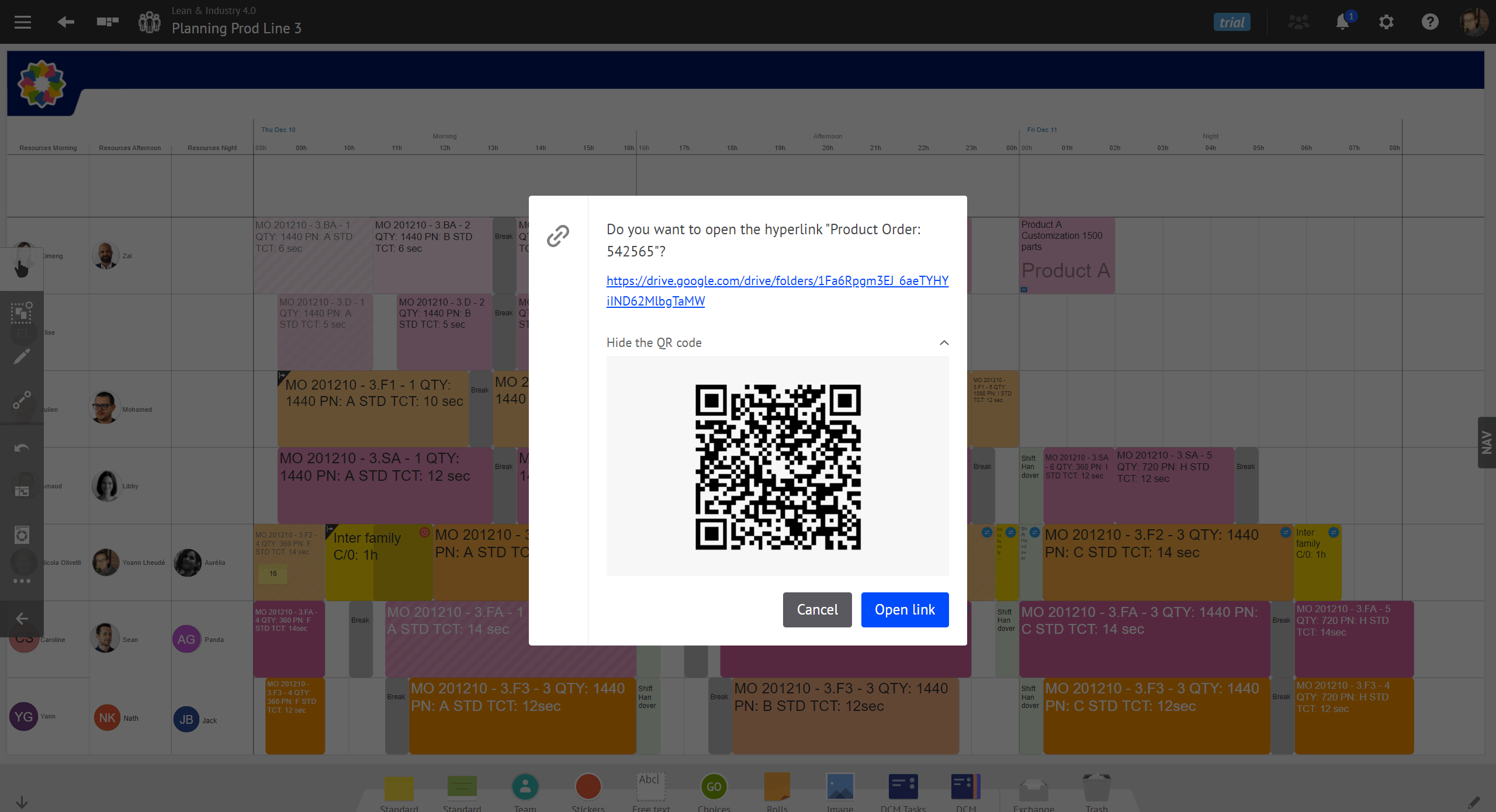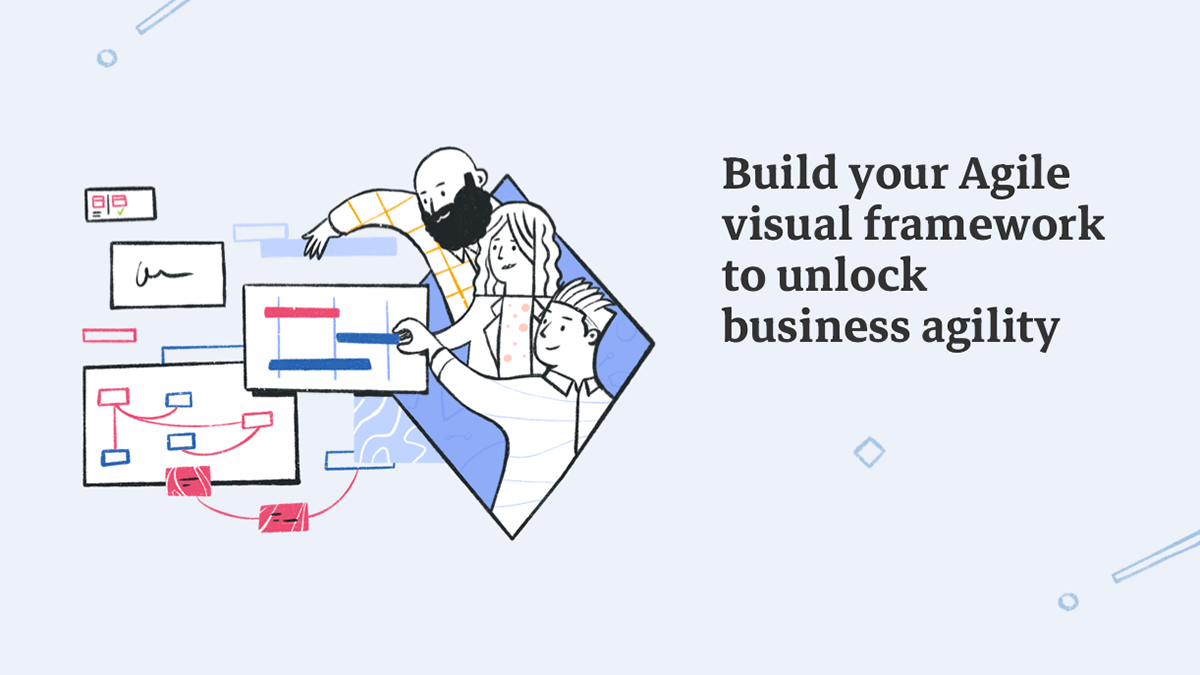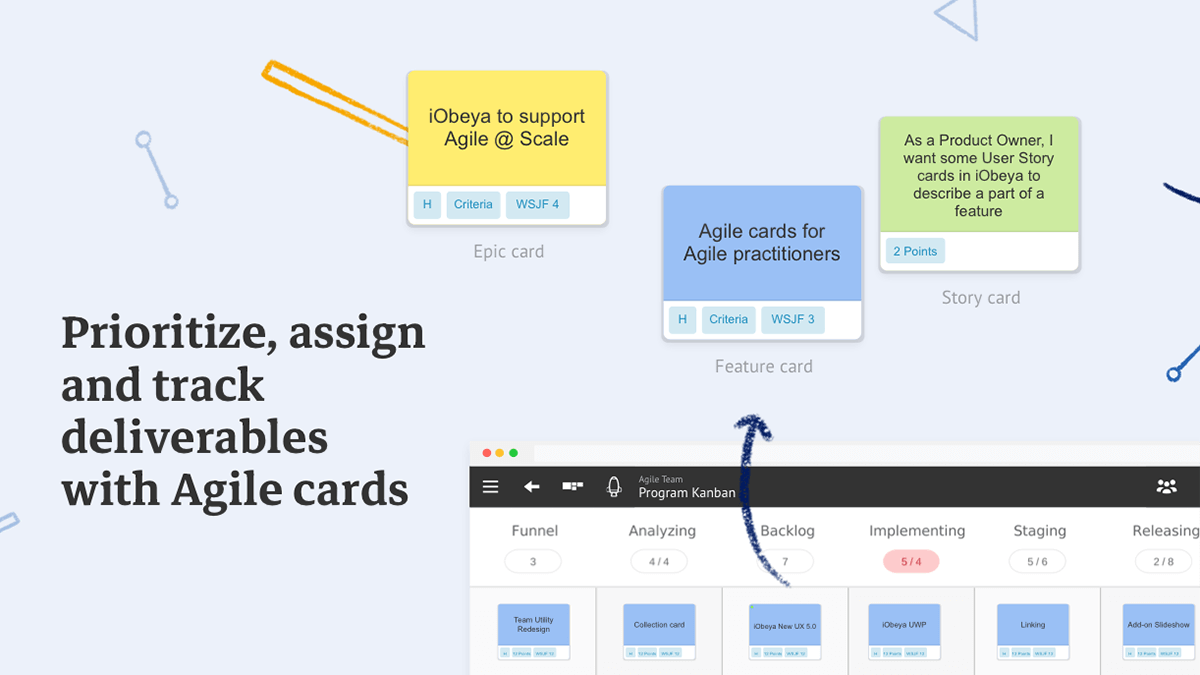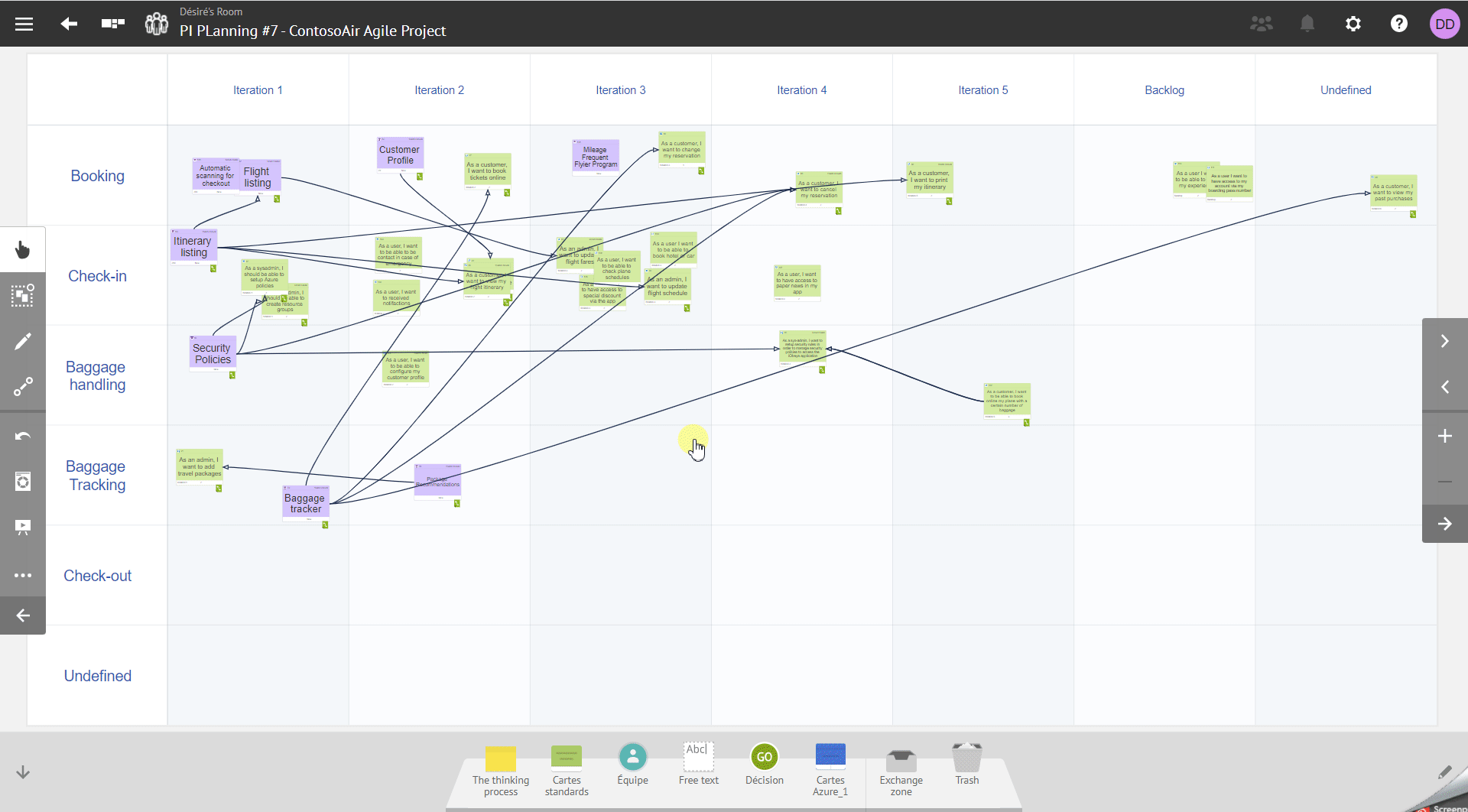What's new in iObeya 4.8?
Disclaimer 📢
The version 4.8 is a Cloud version. Therefore, the improvements and new features described below are only available for Cloud customers yet.
Of course, they will be available in the next certified version of iObeya for on-premise installations scheduled for Q2 2022.
Stay tuned!
New general features
Board templates graphically refreshed
Year after year we have added new board background templates ready to be used in the iObeya platform catalog. In iObeya 4.8 we refreshed them all using new and unified design guidelines!
Moreover, we've taken this opportunity to take into account the recommendation from the Web Content Accessibility Guidelines (WCAG) 2.0 in order to provide more accessible templates.
Don't worry, your existing iObeya boards won't be impacted unless you decide to manually upgrade the background to the new version available in the iObeya catalog (beware if you do so, you can't choose back the old one).
Let us know how much you like the new design of our board background templates!
Better legibility on activity cards on visual planning
As the power of Visual Management is to allow people to easily access and understand the right information at the right time, we have worked on improving the activity cards rendering.
Indeed, in some cases it was difficult to differentiate activity cards using the same color on a schedule created with the planning board in iObeya
To make it easier to see where one project ends and another begins, the activity cards rendering has been improved by making the border thicker while reinforcing its color contrast.
Industry 4.0
QCD add-on (Enterprise plan)
Reminder ☝
This is an add-on that need to be installed and activated on your iObeya platform. If you can't find it, you need to request to your platform administrator to install this add-on.
New consolidation detailed overview
QCD provides the ability to create consolidation formulas aggregating data from various performance indicators to create a bird's-eye view of the overall performance of your projects and departments.
However, in large organizations with various consolidation layers, the result of the consolidation may not always be easy to understand.
In version 4.8 of QCD, we've added a new detailed view to visualize the consolidation results details and to navigate through your KPI Tree to get a detailed understanding your organization's performance.
Thanks to this view, it's now easy to drill down within your network of Visual Management boards and virtual rooms in order to better understand the bottleneck in your system and to identify the root causes behind performance gaps.
New Min & Max operators to create custom consolidation formula
The min and max operators introduced in version 4.7 are now also available to create custom formulas for advanced consolidation use cases.
Identify extreme values and consolidate them to analyze your performance gaps and identify improvement levers.
Ability to select which period to update in the simplified edition interface
The simplified edition interface available in the QCD utilities allows reporting performance for the current period with an operator-friendly interface optimized to be used on tablet devices.
With iObeya 4.8, it's possible to navigate between "boxes" in the time window configured on the QCD board, so that operators can report about performance more easily. This feature is available for both temporal and custom cut-out letters.
Export all QCD actions from a room
It was already possible to export QCD actions from a board as a CSV file to be used outside of iObeya. Now you will also be able to export all QCD actions from a room!
In the room view, open the QCD utility menu on the left-hand side of the application and select Export>Export actions.
DCM add-on (Enterprise plan)
Reminder ☝
This is an add-on that need to be installed and activated on your iObeya platform. If you can't find it, you need to request to your platform administrator to install this add-on.
QR codes are available on DCM cards
Daily Capacity Management (or DCM) is the new module that was made available with iObeya 4.6 allowing to digitize production schedule, capacity planning, and any other work scheduling whiteboards using iObeya.
To make it easier and error-proof to launch production orders on the field, you will now be able to display a QR code that can be scanned to read the data stored in the hyperlink fields from your DCM Cards.
The QR code can be scanned using a smartphone or a tablet to quickly access technical documentation, detailed instructions, or any external information that has been referenced using the DCM card hyperlink.
Agile@Scale
Agile add-on (Enterprise plan)
Reminder ☝
This is an add-on that need to be installed and activated on your iObeya platform. If you can't find it, you need to request to your platform administrator to install this add-on.
 As a Scaled Agile Framework® (SAFe®) partner, we are helping many large organizations to successfully deploy business agility thanks to digital Visual Management.
As a Scaled Agile Framework® (SAFe®) partner, we are helping many large organizations to successfully deploy business agility thanks to digital Visual Management.
Since version 4.0 of iObeya, we have packaged and provided all the Agile boards and artifacts, such as Story and Feature cards, required to deploy agile practices at scale based on recommendations from SAFe.
To continue on this journey, we are updating the iObeya agile cards to align with the evolution of SAFe while giving you more flexibility to adapt iObeya to your own implementation of the framework.
Revised accepted values for WSJF score calculation on Feature cards
Weighted Shortest Job First (or WSJF) is a work prioritization tool to help teams prioritize initiatives in order to maximize value creation. WSJF is estimated as the cost of delay divided by job size or duration.
In order to improve flexibility and to make iObeya more adaptable to your usage, the values that can be entered to calculate the WSJF score are not limited to 10 points anymore.
In other words, Agile teams will now be able to prioritize their backlog by using either the Fibonacci scale (0, 1, 2, 3, 5, 8, 13, 21,...) or any other estimation model using values greater than 10.
Supporting more than 99 story points in Story cards
Story points are units used in Agile methodologies to estimate the workload required to fully complete a story, or any piece of work to deliver value. As the possible use cases can vary from team to team or project to project, we have increased the number of story points that can be allocated to a story to up to 999.
Azure DevOps connector (Enterprise plan)
Reminder ☝
This is an add-on that need to be installed and activated on your iObeya platform. If you can't find it, you need to request to your platform administrator to install this add-on.
Filter which Azure DevOps dependencies are displayed in iObeya
One of the strongest advantages of using Visual Management for Agile project management is that it helps highlight dependencies between teams and projects.
For instance, during PI Planning events, these large rituals where about one hundred participants may work simultaneously on one board, it can be difficult for the various teams to identify and resolve all the dependencies they need to take into account to create a viable plan.
Based on the feedback we have received, the latest version of the Azure DevOps connector in iObeya 4.8 allows you to:
- Choose to display or not the dependencies on a board
- Select which dependency type(s) to display
From now on, it will be easier to identify and manage dependencies thanks to iObeya while keeping control of the information you need to display depending on your Agile rituals.
Platform Administration
iObeya username can be edited by the platform administrators
Platform administrators will be glad to hear that they can now modify the username of any user account if needed. This action is available for a specific user while editing their user profile in the platform administration interface. It can be done for multiple users at once with the bulk import functionality, allowing for instance to standardize user accounts while implementing Single Sign-on.
Filter users by group
When exploring the list of all provisioned users on your iObeya platform, you can now see which group a user belongs to. It is also possible to filter users listed in this view by group. This might be useful for example when you want to list all users of a particular group to troubleshoot access rights issues while using groups.
Release notes 4.8
To learn more about what changed in iObeya 4.8, read the detailed Release notes to get the full list of changes and bug fixes included in this new version.

